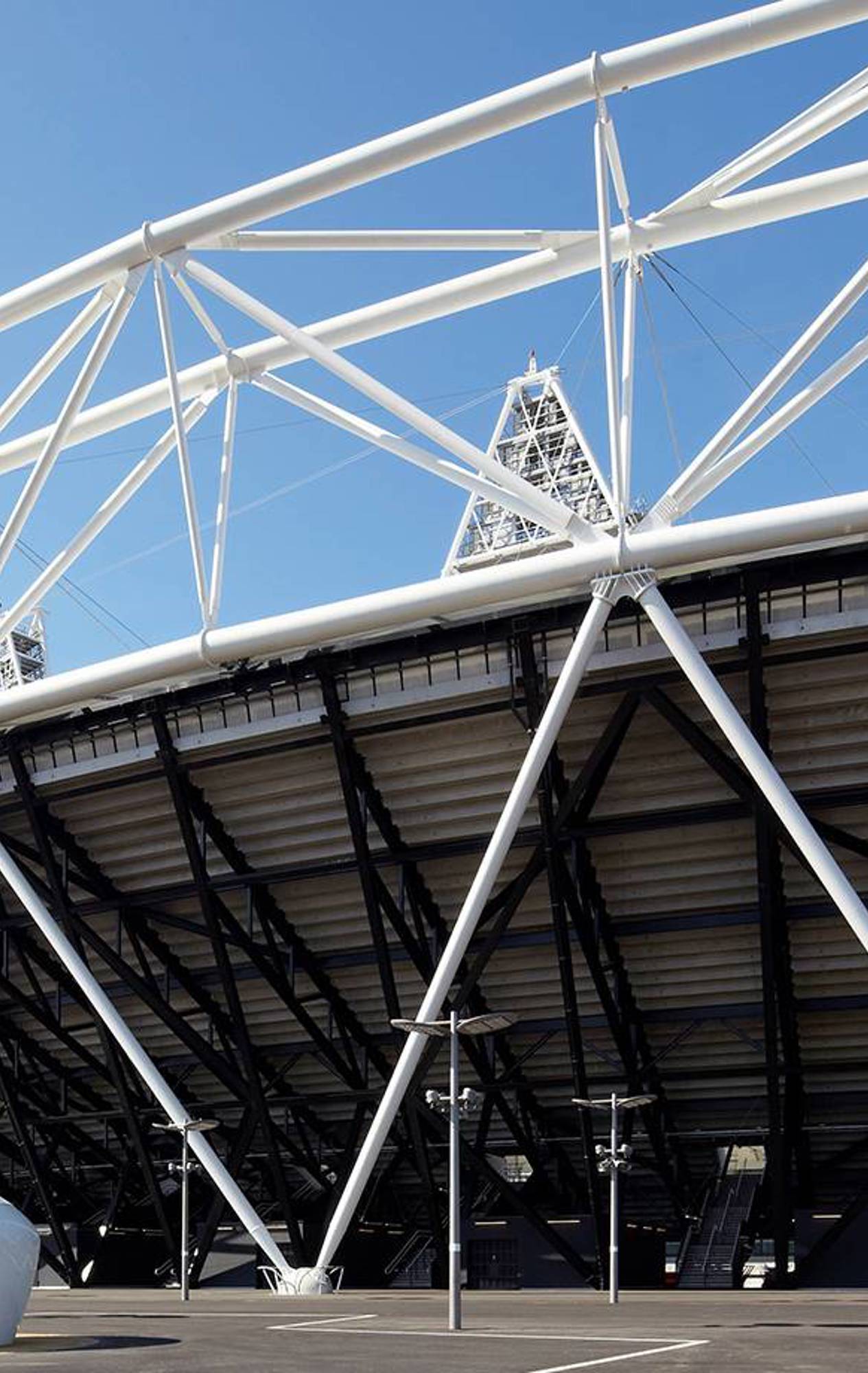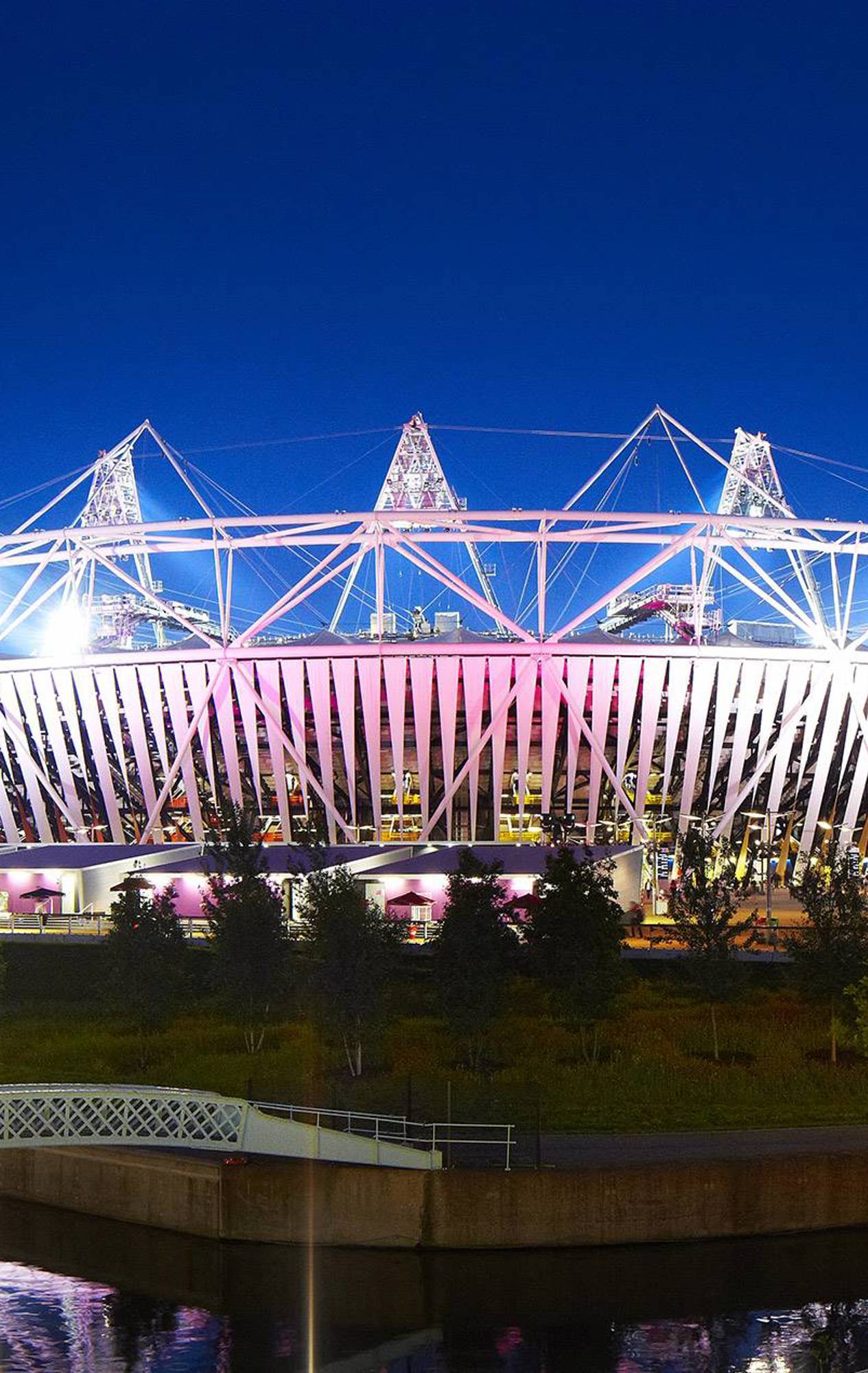
London Olympic Stadium completed early
06 Apr 2011The Olympic Stadium has been completed under budget, ahead of schedule and with an exemplary safety record.
On 6th June, we celebrate the 80th Anniversary of a military operation which changed the face of Europe forever.
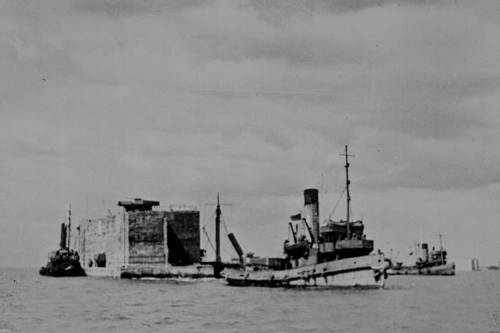 After four years of Nazi occupation, the D-Day landings marked the beginning of the Allied invasion of Western Europe. A strategic turning point in the war against Hitler’s Germany, key to the success of the assault, codenamed Operation Overlord, was the Allies’ ability to supply and support the advancing forces in the crucial days and weeks following the landings.
After four years of Nazi occupation, the D-Day landings marked the beginning of the Allied invasion of Western Europe. A strategic turning point in the war against Hitler’s Germany, key to the success of the assault, codenamed Operation Overlord, was the Allies’ ability to supply and support the advancing forces in the crucial days and weeks following the landings.
With the ports along the French coastline heavily fortified and defended, a bold and ingenious solution was required to provide deep water harbour facilities close to the landing beaches where none existed.
It was in this audacious endeavour that the company was to make perhaps its most significant contribution to the war effort. A complicated military engineering project of unprecedented size and complexity, it was an undertaking that was to involve the co-ordinated efforts of contractors across the country.
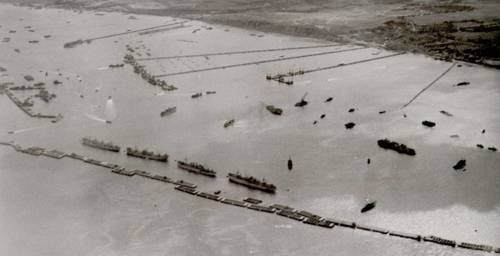
For some time, Sir Malcolm (the third son of Sir Robert) had considered the idea of temporary concrete harbours. In 1943 Brigadier Bruce White of the War Office appointed him Chairman of a committee of contractors which included Norman Wates, son of the founder of Wates, to consider building a harbour in England and transporting it to France. He led the team in conceiving the solution named ‘Mulberry Harbour’.
The Royal Engineers 50th Anniversary D-Day booklet reported the construction of the concrete caissons that would form the harbour began on 1st October 1943. In just eight months 147 caissons were constructed in various sizes from 25ft to 60ft high, to withstand the wide tidal range of the Normandy beaches.
Of the 80 largest caissons, codenamed Phoenix, 10 were constructed by the company. Eight were built in the East India Dock Wet Basin with two part-built downstream in an improvised dry dock on the banks of the Thames at Erith and towed back upstream where their construction was completed afloat. Almost 100,000 tonnes of reinforced concrete was used in the construction of the 10 caissons.
Building contractors worked around the country that winter in black-out conditions to produce the caissons under immense time pressure and with London facing frequent air attack.
John Durkin, from County Sligo, remembered the contract vividly: “I remember the sirens going and everyone running. We didn’t even wait to go down the ladders but swung down the scaffolding and often dived into the water in our dash to the shelters. We were working day and night; the lights all being shrouded so that we were almost working in the dark. It was certainly my most interesting and frightening job with McAlpine.”
80,000 tons of rubble from bomb damaged buildings were tipped to form a bed on which to build the caissons. After their completion at East India Dock, the basin was flooded and the dam demolished. The caissons were towed to the assembly point at Selsey Bill and joined those built by other contractors.
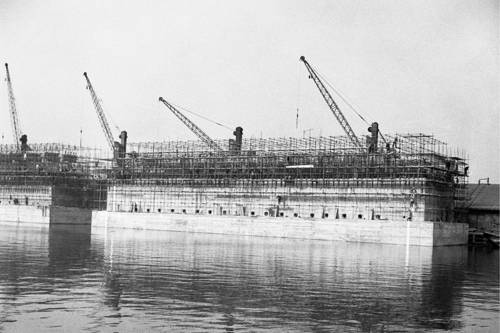 The Supervising Engineers’ Executive Engineer wrote that McAlpine’s “resourcefulness and drive successfully completed the work at unprecedented speed.”
The Supervising Engineers’ Executive Engineer wrote that McAlpine’s “resourcefulness and drive successfully completed the work at unprecedented speed.”
Immediately after the first Allied landings in June 1944, a fleet of tugs towed the Mulberry Harbour caissons across the English Channel to Arromanches. The harbour received 6,000-10,000 tons of supplies and material each day until the end of August by which time the Allies had captured and re-opened parts of the port of Cherbourg.
By the end of 1944 some 39,000 vehicles and 220,000 troops had landed in France, General Eisenhower stating that: “Mulberry exceeded our best hopes.”
On the 50th Anniversary of the D-Day exhibition The Royal Engineer stated: “There is no doubt that Mulberry was one of the most impressive examples of project management and organisation in the construction industry that one is ever likely to see.”
In March 1946, The Structural Engineer declared: “Probably no single war-time engineering enterprise has aroused the interest of engineers in quite the same way as the pre-fabricated harbours…the remarkable nature of the Mulberry Harbours is due definitely mainly to two aspects – firstly that anyone dare make the decisions to build them at all, and secondly that such a vast piece of work was done in such a fabulously short time.”
If you are in the Portsmouth area and interested to learn more, you might like to visit the D-Day Museum, where there is an installation acknowledging our involvement – and that of Wates.
The Olympic Stadium has been completed under budget, ahead of schedule and with an exemplary safety record.
The M74 Completion project was named winner of the Chartered Institution of Highways & Transportation Effective Partnerships Award 2012.8
The Olympic Stadium has been honoured in this year’s Structural Steel Design Awards.

